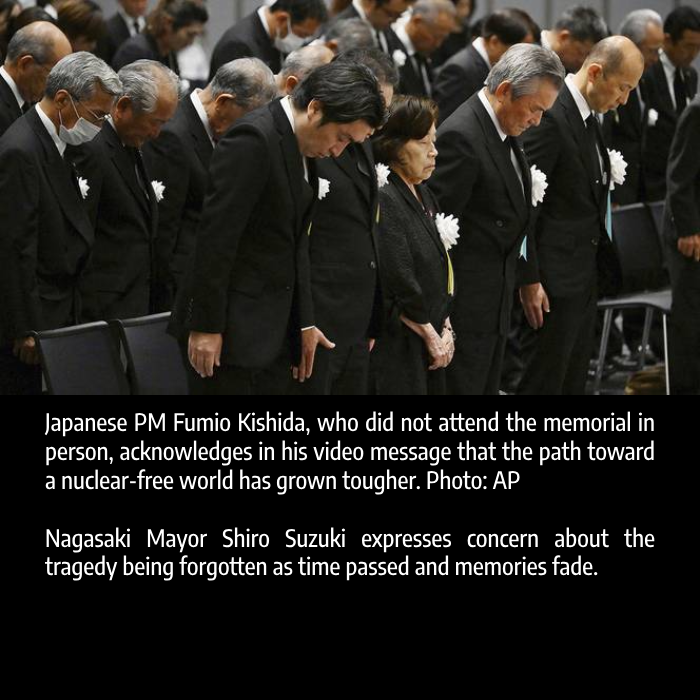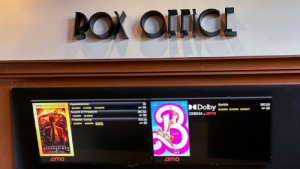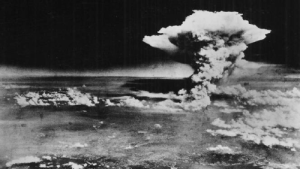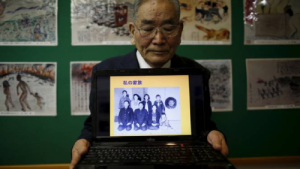
Nagasaki has marked the 78th anniversary of the US atomic bombing of the city with the mayor urging world powers to abolish nuclear weapons, saying nuclear deterrence also increases risks of nuclear war.
Shiro Suzuki made the remark on Wednesday after the Group of Seven industrial powers adopted a separate document on nuclear disarmament in May that called for using nuclear weapons as deterrence.
“Now is the time to show courage and make the decision to break free from dependence on nuclear deterrence,” Nagasaki Mayor Shiro Suzuki said in his peace declaration. “As long as states are dependent on nuclear deterrence, we cannot realize a world without nuclear weapons.”
Russia’s nuclear threat has encouraged other nuclear states to accelerate their dependence on nuclear weapons or enhance capabilities, further increasing the risk of nuclear war, and that Russia is not the only one representing the risk of nuclear deterrence, Suzuki said.
The United States dropped the world’s first atomic bomb on Hiroshima on Aug. 6, 1945, destroying the city and killing 140,000 people.
A second attack three days later on Nagasaki killed 70,000 more people. Japan surrendered on Aug. 15, ending World War II and its nearly half-century of aggression in Asia.
At 11:02 am local, the moment the bomb exploded above the southern Japanese city, participants at the ceremony observed a moment of silence with the sound of a peace bell.
Suzuki expressed concern about the tragedy being forgotten as time passed and memories fade.
Survivors have expressed frustration about the slow progress of disarmament, while the reality of the atomic bombing and their ordeals are not yet widely shared around the world.
Suzuki, whose parents were hibakusha, or survivors of the Nagasaki attack, said knowing the reality of the atomic bombings is the starting point for achieving a world without nuclear weapons.
He said the survivors’ testimonies are a true deterrence against nuclear weapons use.

“Barbie” is due to be released in Japan later this month, but no date has been set for “Oppenheimer. Photo: AFP
With hashtags like #NoBarbenheimer, Japanese social media users reminded the world of the devastating impact of atomic bombs, which claimed around 214,000 lives in Hiroshima and Nagasaki.
READ: Japan outraged as ‘Barbenheimer’ memes trigger painful atomic bomb memories
Disarmament movement
Prime Minister Fumio Kishida, who did not attend the memorial in person, acknowledged in his video message that the path toward a nuclear-free world has grown tougher because of rising tensions and conflicts, including Russia’s military operation against Ukraine.
Also weighing on the disarmament movement is a deeper division in the international community.
Kishida, who represents Hiroshima in parliament, has sought to showcase the G7 commitment to nuclear disarmament but has angered the survivors for justifying nuclear arms possession for deterrence and for refusing to sign the Treaty on the Prohibition of Nuclear Weapons.
Suzuki demanded Kishida’s government and national lawmakers quickly sign and ratify the treaty and attend the upcoming meeting as an observer “to clearly show Japan’s resolve to abolish nuclear weapons.”
As Washington’s ally, Japan is under the US nuclear umbrella and seeks stronger protection as the allies reinforce security cooperation to deal with threats from China and North Korea’s nuclear and missile advancement. Under its new national security strategy, Kishida’s government is pushing for a military buildup focusing on strike capability.
As of March, 113,649 survivors, whose average age is 85, are certified as hibakusha and eligible for government medical support, according to the Health and Welfare Ministry. Many others, including those known as victims of the “black rain” that fell outside the initially designated areas, are still without support.

The use of atomic bombs on the Japanese cities of Hiroshima and Nagasaki marked the first-ever use of nuclear weapons in history. Photo: AP Archive
The Hiroshima bombing destroyed everything within 1.5 kilometres (1 mile) of ground zero and created searing heat of 3,000 degrees Celsius (5,432 degrees Fahrenheit) at its centre.
READ: In photos: 78 years since atomic bombs drop on Hiroshima and Nagasaki

The number of second-generation survivors of the 1945 atomic bombing, known as “hibaku nisei,” is estimated at around 300,000 to 500,000. Photo: REUTERS
A court in Japan rejected a demand by a group of children of the 1945 US atomic bombing, saying that it is up to the government to decide whether to expand financial support to include second-generation survivors.
READ: Court denies medical aid to Nagasaki atomic bomb survivors’ children
Source: TRT World. 10 Aug 2023